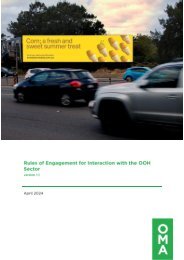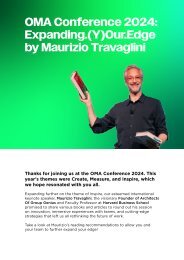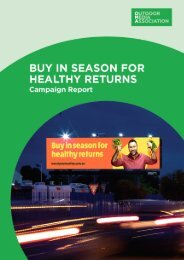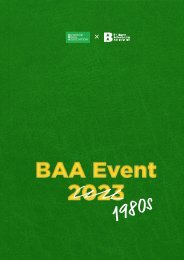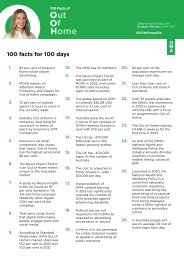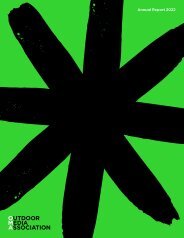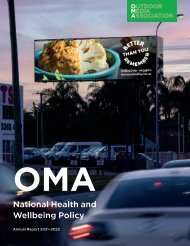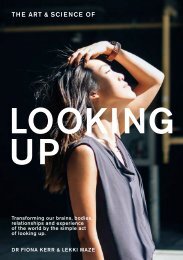OPEN 2
The OPEN series was born from the desire to create a forum for applauding and interrogating strong creative design within the Out of Home (OOH) industry. Illustrating how OOH is part of our cityscape, our commute, our weekend and our shopping and holiday experiences, OOH is ‘the original tweet’ and it cannot be switched off, ignored or fast forwarded. Big, bold, cheeky, simple, clever and controversial, OOH is the ultimate creative stage, allowing brands to be unique, contextually relevant and targeted while reaching mass audiences.
The OPEN series was born from the desire to create a forum for applauding and interrogating strong creative design within the Out of Home (OOH) industry. Illustrating how OOH is part of our cityscape, our commute, our weekend and our shopping and holiday experiences, OOH is ‘the original tweet’ and it cannot be switched off, ignored or fast forwarded. Big, bold, cheeky, simple, clever and controversial, OOH is the ultimate creative stage, allowing brands to be unique, contextually relevant and targeted while reaching mass audiences.
Create successful ePaper yourself
Turn your PDF publications into a flip-book with our unique Google optimized e-Paper software.
FOREWORD | CONTINUED<br />
...<br />
this cause. Then there is the experience that<br />
OOH can create. In The Mind & Mood Report we<br />
have found, particularly in the aftermath of the<br />
global financial crisis, a small but significant<br />
shift in focus among Australian consumers<br />
from ‘things’ towards ‘experiences.’ After years<br />
of persistent gloom and doom about the cost of<br />
living and the domestic economy, Australians<br />
have now started to get excited about planning<br />
and spending on travel, eating out, festivals<br />
– the full spectrum of out-of-home activities.<br />
Consumers have also complained for some<br />
time about how they’d like Australian retail<br />
environments to be more dynamic, interactive<br />
and innovative. There are many examples in<br />
<strong>OPEN</strong> 2 of how OOH can provide an experience<br />
to passers-by – something that will entertain,<br />
distract, lift their mood and focus their<br />
attention.<br />
In more recent times, the big opportunity<br />
for advertisers is how OOH can speak to the<br />
mobile devices we carry with us at all times.<br />
Australian consumers have a huge appetite for<br />
communication; in fact, there are more mobile<br />
phones in Australia than people. We look to<br />
our mobile devices for advice on everything –<br />
where to go when we are lost, what to buy and<br />
where to buy it, what to eat (and to document<br />
what we eat before we eat it). Each of us is an<br />
explorer, with a mobile device as our compass.<br />
And so, there are numerous examples in <strong>OPEN</strong> 2<br />
of the ways in which OOH can interact with<br />
technology to sell, tell, inspire and entertain.<br />
The Pepsi Max Unbelievable campaign (p. 165)<br />
uses augmented reality to surprise and delight<br />
commuters with images of tigers walking<br />
towards them and snakes popping out of<br />
manholes.<br />
There is no such thing as the undistracted<br />
consumer anymore. We watch our TV<br />
screens with mobile devices on our laps. We<br />
multiscreen and multitask. Our attention is<br />
always divided. Even on a holiday to Disneyland<br />
we are experiencing, reviewing, critiquing and<br />
yes, consuming, across multiple channels.<br />
OOH has a particular challenge:<br />
catching the eye of people riding a bike,<br />
driving a car, rushing from work to the train<br />
station. But OOH also creates a sense of<br />
place that other media struggle to do. What<br />
would Times Square be without OOH? Even<br />
in our own iconic cities there are landmark<br />
advertisements, like the largest billboard in the<br />
country overlooking Sydney’s ANZAC Bridge.<br />
And therein lies the opportunity for disruption.<br />
Great OOH creative is smart about recognising<br />
not only its own geography but the mindset<br />
and needs of the people that share the space<br />
with the advertising content. A recent study<br />
in the UK showed that “people Out-of-Home<br />
have a 33% heightened alertness than people<br />
in home.” 2<br />
<strong>OPEN</strong> 2 contains examples of OOH<br />
that are short, sharp and impactful. These<br />
are the ads that you notice and understand<br />
immediately, even if you are driving home<br />
thinking about what to have for dinner, or<br />
telling your daughter to stop annoying her little<br />
brother. The 3D Dove billboard from Australia<br />
is a good example (pp. 72–73), as are the<br />
Royal Automobile Club of Western Australia’s<br />
billboards (p. 74), or Destination NSW’s Love<br />
every second billboards (pp. 130–131).<br />
Then there is the OOH that challenges<br />
you to stand in front of it and read. There are<br />
moments in our day when we stop rushing, stop<br />
talking, put the phone away and are prepared<br />
to be interested and engaged. Check out Write<br />
your own ending from Bookworld (pp. 150–151).<br />
The media environment is in a constant<br />
state of change. Australian consumers are<br />
thrilled about this, eager to adapt and embrace<br />
the new. As the examples in <strong>OPEN</strong> 2 show, there<br />
is power and potential in OOH to hook the<br />
excited and media-savvy consumer, to create<br />
outdoor interactive environments, to speak<br />
to the digital devices that have become our<br />
everyday compasses – to sell, to tell, excite<br />
and inspire.<br />
1<br />
AC Nielsen 2011, OOH Public Attitude Study<br />
2<br />
Outdoor Media Centre UK 2014<br />
/ 8



